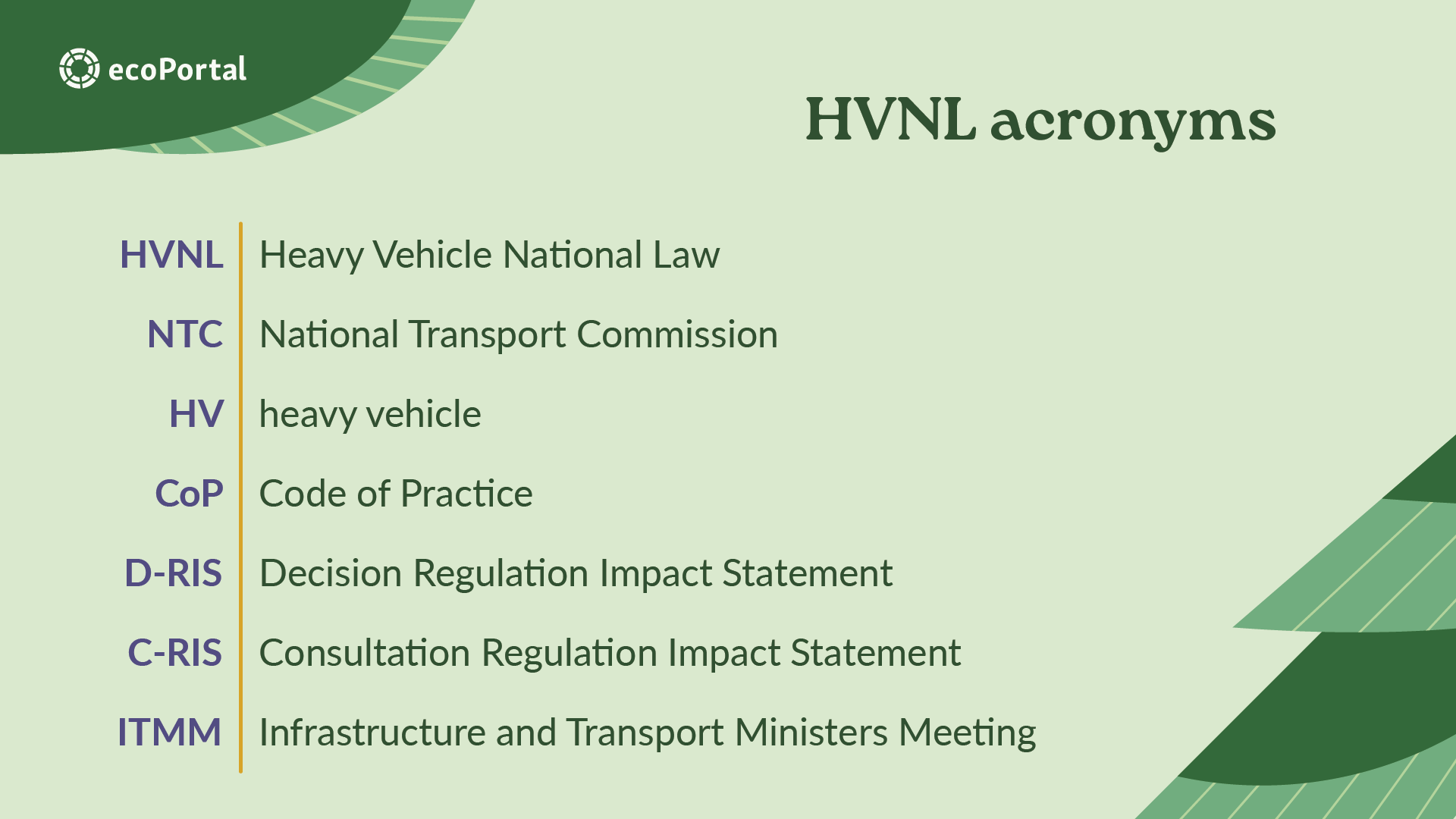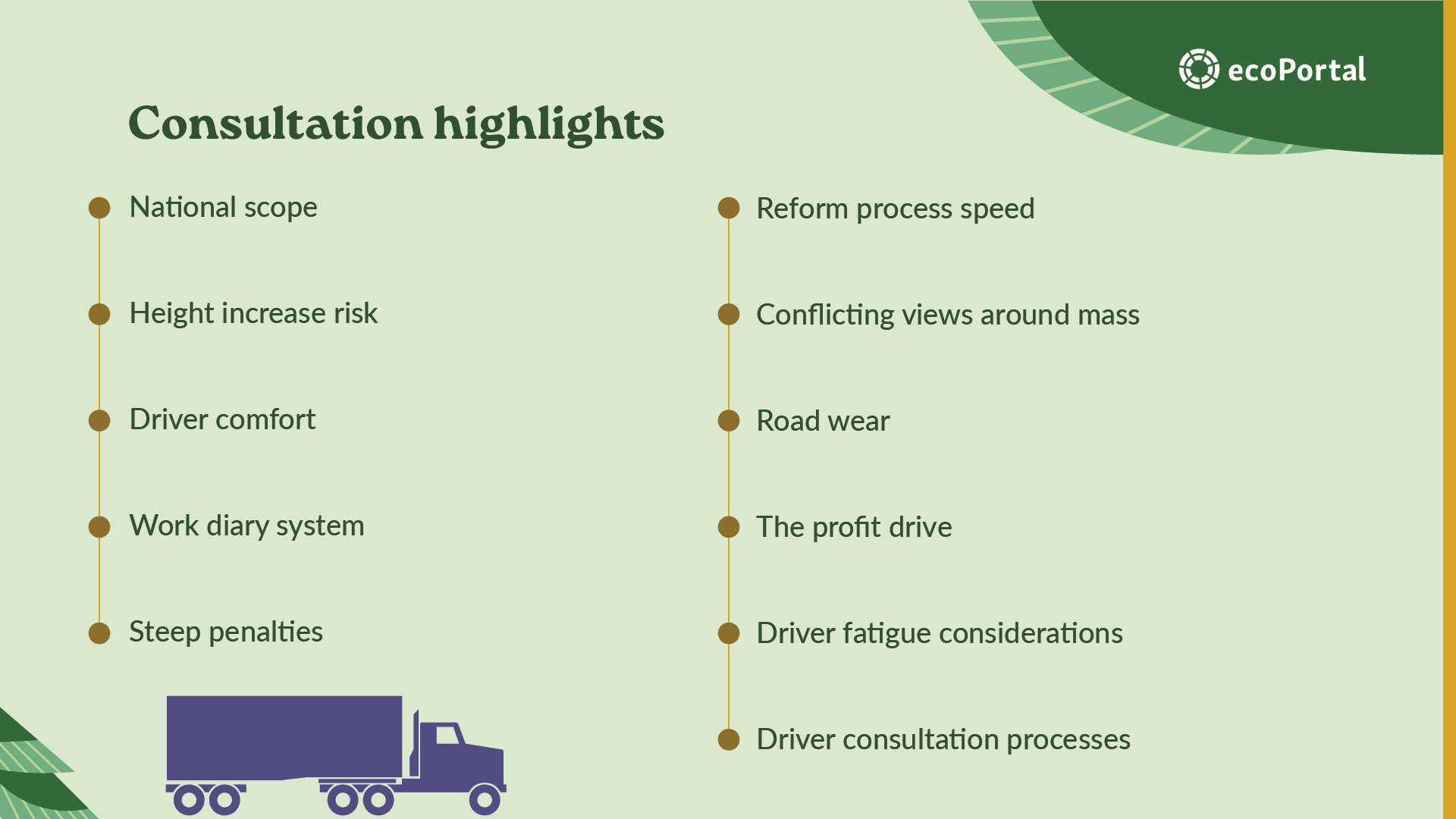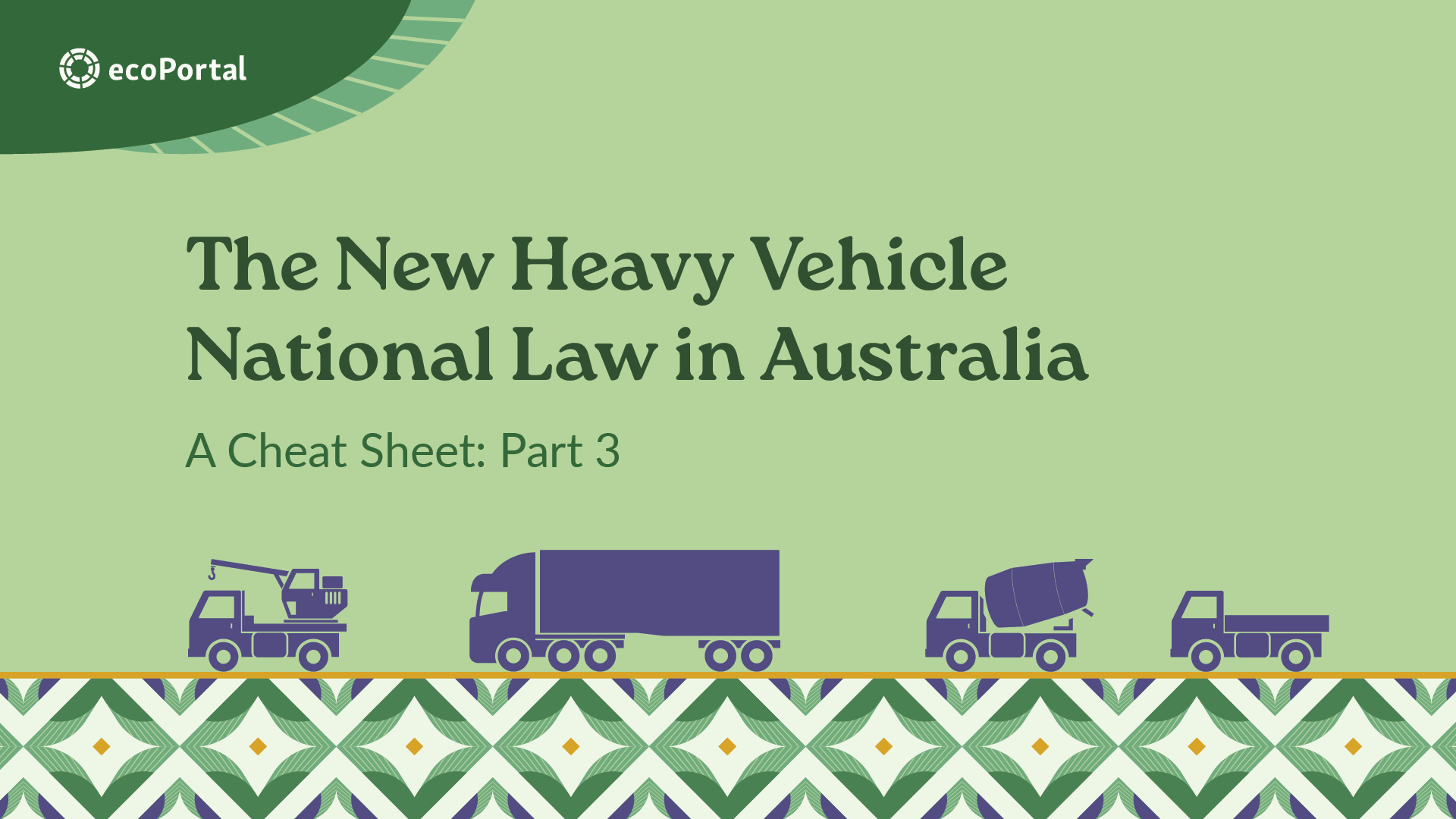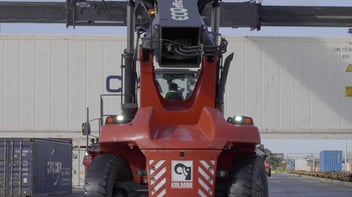The consultation: a snapshot
Still with us? Good, because this is the fun part. If you're just joining this story now, jump back to part 1—it'll all make a lot more sense.
Reading the reports released thus far, a layperson might think, "wow, they seem to have everything covered." But many in the industry would disagree.
As you might expect, opinions vary, but here are some trends and general findings from the public consultation process.
A national legislation that misses half the nation
A number of respondents were critical of the exclusion of Western Australia and the Northern Territory on various counts, questioning how the proposed legislation can call itself national while excluding an area that constitutes 11% of the population and 50% of the land mass.
Get fresh H&S insights weekly
Height increases—a tall tale?
Many respondents saw the proposed height increase as a huge risk that would lead to many more bridge strikes and damage to power lines, tunnels, and trees. C Wong noted that Melbourne’s Montague Street Bridge has been hit so many times that there’s a webpage counter dedicated to it, and suggests focusing on updating more roadway to meet the current height rather than increasing it.
Not all agreed about this, however, with the Australian Livestock and Rural Transporters’ Association noting that their industry does not experience significant bridge incidents. That association in fact supports the height increase, noting that some carriers have to apply for over 500 permits a month to travel at the proposed height. They went on to say that any rollover concerns can be allayed with stability controls, and that jurisdictions’ power line and tree clearance is 4.9 metres already.
A long road to comfort
A few thoughtful respondents—both organisations and individuals—noted a desire to see the proposed extra metre of length limit be set aside for driver comfort (ie. better sleeping facilities) than extra load space.
“Want drivers to have a better rest to help reduce fatigue? Give them something better to rest in. Give them a decent size sleep cab,” the Australian Trucking Association wrote. “If you had trailer and trailer combination limits and unlimited prime mover’s length, you could afford to have a bigger and more comfortable sleeper cab without losing the ability to be competitive in the market.”
Bonaccord, on the other hand, posited that, given the number of 20-metre vehicles on the road already, that length should become “the new normal.”

A system that sets drivers up to fail
The Australian Trucking Association pointed out how, in the NTC’s 2019 industry survey, 60% of respondents disagreed or strongly disagreed that the HVNL’s work diaries were easy to use.
Various respondents also pointed out that compulsory work diary requirements can pose a problem for workers whose literacy level would make keeping the diary difficult, “setting the workers up for failure through no fault of their own,” as the Bonaccord Group described it.
Punishments that don’t fit the crime
A number of respondents were vocal about the currently steep penalties for the most minor work diary infractions, noting that a small breach may cost an entire week’s pay. It is no wonder, then, that Teletrac Navman found in its 2019 benchmark report that 39% of the surveyed businesses were experiencing driver shortages.
According to Andrew Coulton, these fines continue to drive skilled operators out of the industry. Many respondents agreed that penalties need to become more balanced and aligned with actual harm potential and harm done, addressing small errors first with education and then with much smaller fines.
Driver Kate Austin and others noted how heavily penalising a small mistake made three months ago will not make a meaningful impact on safety, some going so far as to call it a revenue-generating trap. The solution to this varied from checking the log on the day to 14- or 28-day limits.
Pedal far from the metal
Despite the urgent need for this reform, the revisions have thus far been five-plus years in the making, feeling to many respondents like a stalled engine. Many respondents expressed dissatisfaction in how long it’s taken to get here, as well as what the National Road Carriers’ Association describes as “the lack of ambition in the overall reform agenda.”
“It is disappointing that this Review will ‘tinker around the edges’ and will not deliver industry and the community it serves with the outcomes, improvements and actions that were the original intention,” Victorian Transport Association added.
A massive undertaking
For WM Waste Management Services, removing CML would be a breath of fresh air, simplifying mass limit tables, boosting productivity, and bypassing CML accreditation hassle. Others noted the potential of a GML increase (alongside an increased length limit) to reduce the number of HVs on the road—a win for lower congestion and healthier environments. Local government would disagree—see next point.
Hitting the road… too hard
Respondents representing local governments had a lot to say, especially around the impact of heavier vehicles’ weights on the roads, and the consequential costs to upkeep those roads. The Municipal Association of Victoria warned that infrastructure at its current degraded state is not up for the proposed changes to access.
The Local Government Association of Queensland noted “the significant cost impact borne by local government in facilitating freight activity,” and the Australian Local Government Association added that increase in mass limits would need to be accompanied by a guarantee that the additional cost would be offset with a commensurate road user charge redistribution.

Flexible… or profitable?
The National Farmers Federation noted that domestic supply chain costs account for about a third of overall delivered wheat costs, while freight itself is a $92 billion industry that aims to reach $100 billion by 2030.
With all this money on the line, GOUDIE Pty Ltd posited that the heavy vehicle industry would be glad to be rid of all regulations to keep its costs down, and warned that more relaxed regulations will be taken advantage of towards individual profit at the cost of safety.
Bad vibrations
Respondent Arnold McLean expressed serious concerns that the law ignores the extent of whole body vibrations, thermal loading, and driver age and health within driver fatigue considerations, describing it as “nothing short of acute industrial manslaughter.” He also introduced crosswind as an additional consideration.
The last to know
“Happy drivers are safe drivers,” noted Trevor Warner and various others across. And yet, many observed that drivers are rarely asked what would make them happy, let alone what they need, even though they are some of the best-placed individuals to offer insights.
In his response, Nick Twidale reflected that “educating and empowering drivers to make informed decisions about their own fatigue is what the industry has been calling for for many years.” Respondents such as William Robertson further bemoaned the NTC’s lack of communication with drivers on the ground, from research and development right up until execution, also noting that the dense jargon in these reforms makes it hard for workers to process and consequently offer informed feedback.
The Transport Workers’ Union voiced further frustration with their members’ lack of control in their fatigue prevention and management, including hours, rest periods, police targeting, and management pressure to continue to drive when fatigued. This culture leads to underpaid, overworked, stressed, and chronically fatigued drivers.
According to the union, this clear correlation between pay rates, payment structures, and risky driving practices is not new, and solutions have been formulated. For example, a 2008 NTC investigation that examined the root of fatigue-related crashes recommended a safe payments system; to-date it has not been implemented.
Next steps and one for the road
After closing the submissions, Australia’s transport ministers met in December 2023 and decided that the updated law will be presented to ministers in late 2024.
What a journey, right? We’ve travelled across three reports—the D-RIS, the C-RIS, and Kanofski’s report—and all their recommendations, as well as the mixed response to said recommendations by organisations, industry leaders, and individuals. It’s been a long and winding road, and it’s not over yet.
While we wait, have your say: let us know what you think about the process, the recommendations, and their responses here.







